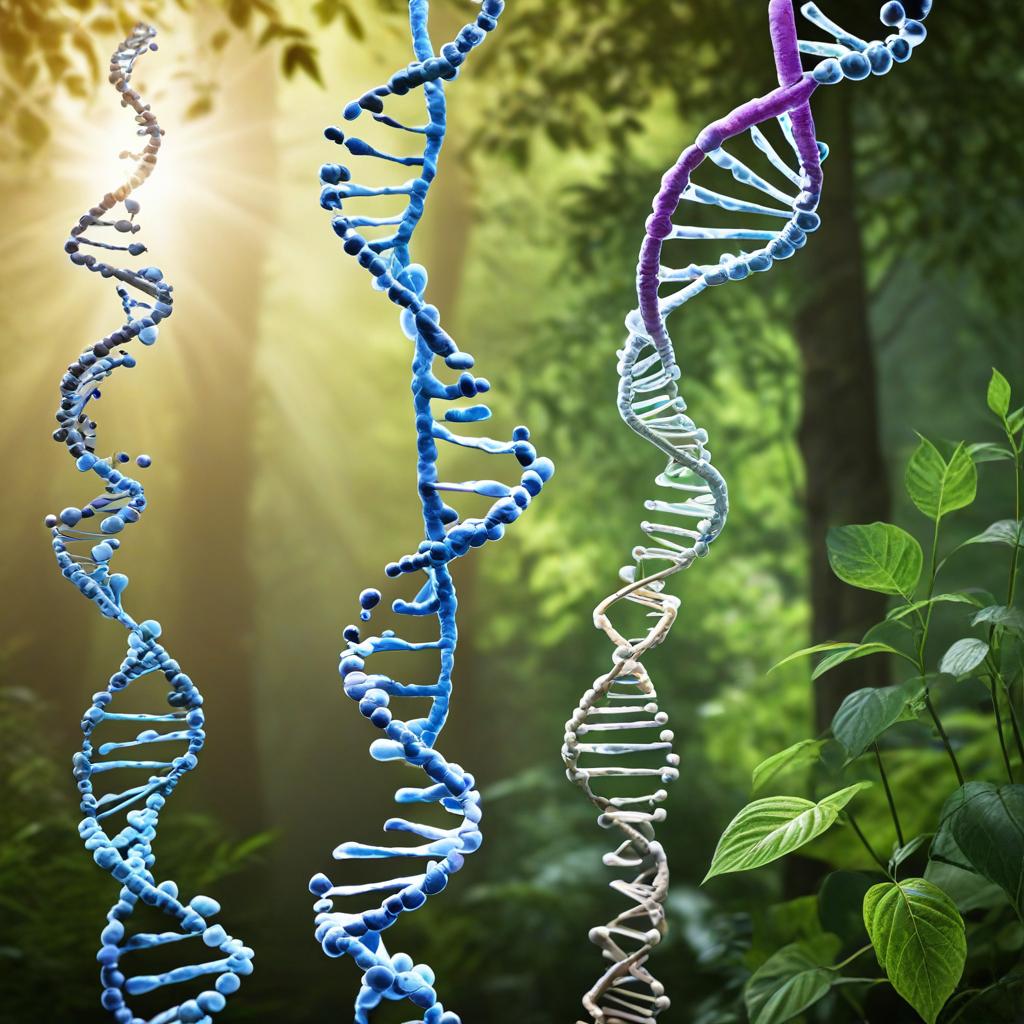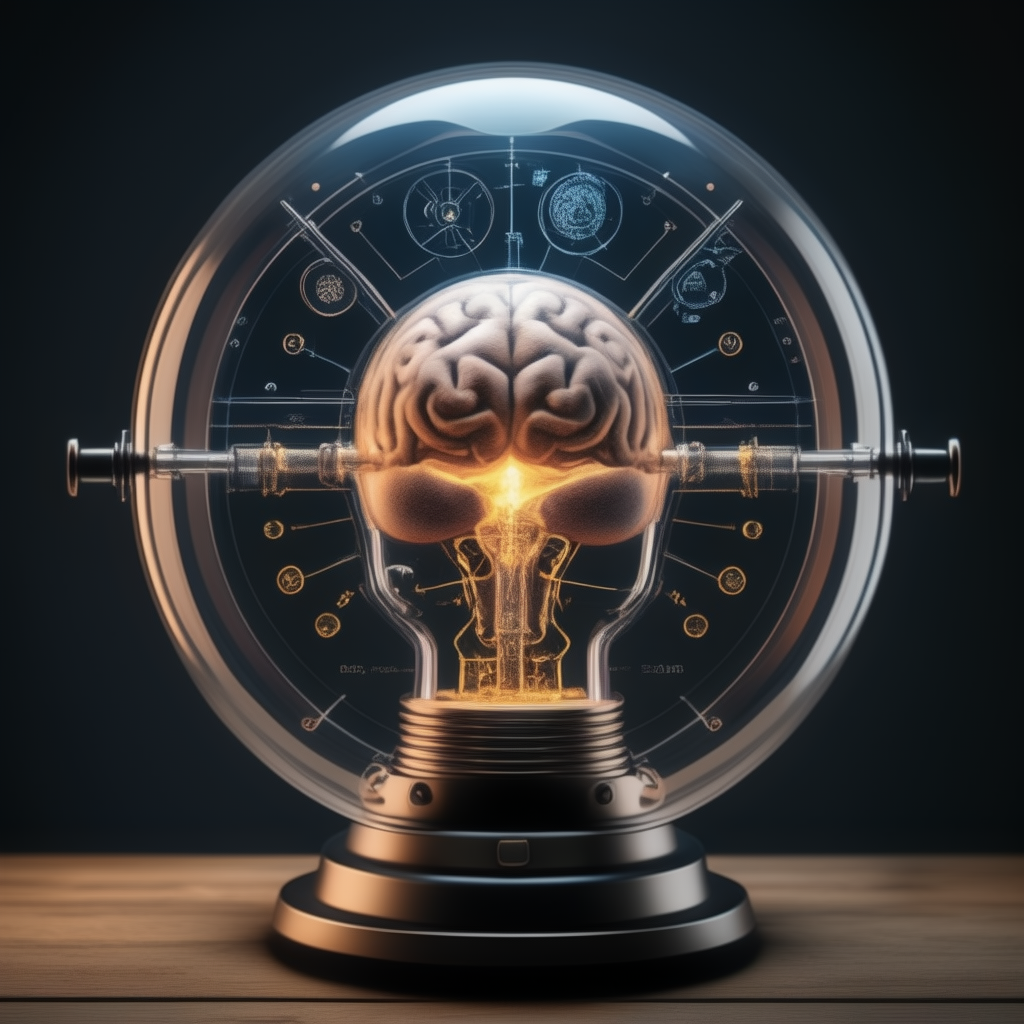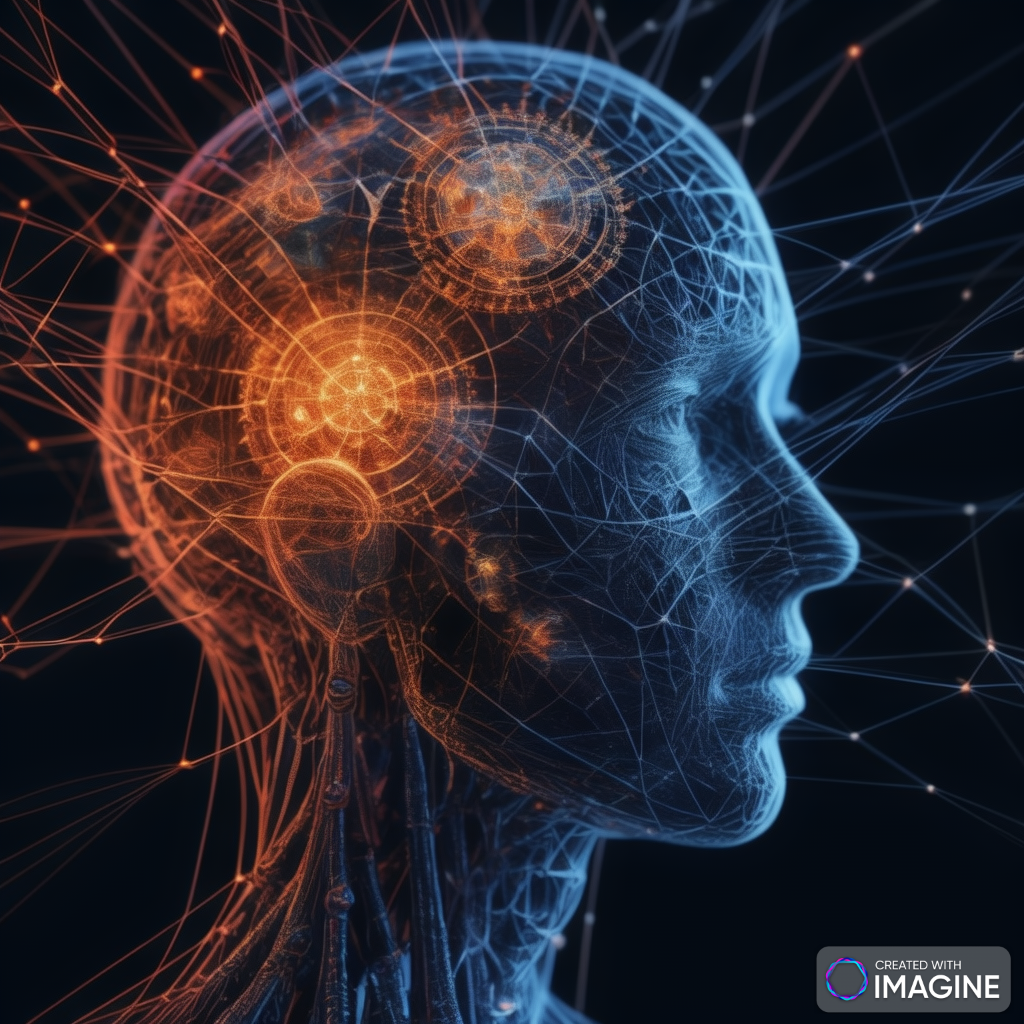Knowledge Graphs in AI and Machine Learning: A Deep Dive into Healthcare Applications
Knowledge graphs have become foundational in Artificial Intelligence (AI) and Machine Learning (ML), transforming various sectors by enhancing data understanding and connectivity. In healthcare, knowledge graphs power critical applications that enhance diagnosis, treatment, research, and patient management. They serve as powerful structures for integrating diverse data sources with AI techniques, including deep learning, neural networks, Generative AI, and well-refined heuristic models. This post explores the intricacies of knowledge graphs, particularly in healthcare, examining how they work with advanced AI models to reshape the landscape of medical insights and patient care.
1. What is a Knowledge Graph?
A knowledge graph is a data structure that represents information in a graph format, connecting data points through nodes (entities) and edges (relationships). Knowledge graphs capture complex relationships between entities, enabling a highly structured, interconnected representation of information. By storing data as interrelated nodes, a knowledge graph allows for efficient retrieval and exploration of relationships, supporting advanced data-driven applications.
2. Why Knowledge Graphs are Essential in Healthcare
Healthcare is an information-rich field where data is diverse, often unstructured, and complex. Knowledge graphs are essential in healthcare because they help:
- Integrate fragmented data from various sources (e.g., electronic health records, research databases, medical literature).
- Identify relationships between diseases, symptoms, treatments, and genetic markers.
- Assist clinicians and researchers in finding patterns and insights that are otherwise hidden in raw data.
3. Core Components and Structure of a Knowledge Graph in Healthcare
Healthcare knowledge graphs are designed to encapsulate various types of data:
- Entities: Diseases, symptoms, treatments, drugs, patients, healthcare providers, etc.
- Relationships: Associations between diseases and symptoms, drug interactions, genetic links, and more.
- Contextual Information: Demographics, medical histories, treatment outcomes, and research findings.
- Metadata: Additional attributes for entities and relationships, such as confidence scores and sources, enhancing the reliability of AI-driven insights.
4. Advanced AI Models in Knowledge Graphs for Healthcare
In healthcare, knowledge graphs increasingly integrate advanced AI models that enable more sophisticated insights and decision-making. Here’s how they work with these models:
a) Deep Learning and Neural Networks
Deep learning models, especially neural networks, are critical in extracting insights from unstructured healthcare data (e.g., medical literature, clinical notes). These models:
- Process vast amounts of medical data to uncover patterns and trends.
- Help populate knowledge graphs by mapping unstructured text to structured graph nodes and relationships.
- Improve the prediction of disease progression, patient risk stratification, and personalized treatment recommendations.
b) Generative AI (Gen AI) and Large Language Models (LLMs)
- Knowledge Expansion: LLMs like ChatGPT or GPT-4 can summarize and extract information from extensive medical literature, contributing to knowledge graph nodes and enhancing its comprehensiveness.
- Language Understanding: LLMs help healthcare professionals extract insights from text-heavy datasets, such as research papers, patient notes, and health records.
- Use in Diagnostic Support: LLMs, when combined with a knowledge graph, support the retrieval of relevant data points, helping clinicians make faster, evidence-based decisions.
c) Small Language Models (SLMs)
- Efficient Specialization: SLMs are tailored to healthcare-specific tasks (e.g., interpreting lab results or analyzing radiology reports) and contribute to filling knowledge gaps in healthcare knowledge graphs.
- Enhanced Interpretability: SLMs allow for fine-tuned models on specific medical domains, improving the accuracy of predictions and insights drawn from the graph.
d) Retrieval-Augmented Generation (RAG) Models
- Combining Knowledge Graphs with LLMs: RAG models improve answer accuracy by retrieving relevant information from knowledge graphs, making AI models more informed and context-aware.
- Use in Patient Care: RAG models help AI-powered healthcare systems answer complex medical questions by connecting user queries with the structured data of a knowledge graph.
- Reduction of Hallucinations: In AI, hallucination refers to fabricated answers. By relying on the knowledge graph as a reliable source, RAG models ensure the responses are accurate and verifiable.
e) Heuristic Models
- Domain-Specific Rules: Heuristic models use pre-defined rules or guidelines (such as treatment protocols or regulatory guidelines) to help filter data and support decision-making.
- Validation Layer: In healthcare, heuristic models help validate AI predictions by applying known principles, providing a “sanity check” against highly experimental or unproven recommendations.
- Enhanced Reliability: By layering heuristic models, healthcare knowledge graphs can produce actionable insights without compromising on safety or accuracy, critical in a regulated industry.
5. How Knowledge Graphs Enhance Healthcare Use Cases
a) Drug Discovery and Development
Knowledge graphs allow researchers to analyze molecular, genetic, and clinical trial data, revealing potential drug candidates and interactions. AI models like deep learning and RAG systems enhance these graphs by:
- Identifying patterns that suggest new uses for existing drugs.
- Highlighting interactions that can lead to adverse effects.
- Automating the synthesis of vast research literature.
b) Patient Diagnosis and Treatment Recommendations
Using LLMs and knowledge graphs, healthcare systems can link symptoms, medical history, and genetic data to diagnose diseases and recommend treatments. This setup:
- Connects rare symptoms to potential diagnoses more accurately than conventional methods.
- Provides context-specific treatment options by considering a patient’s entire medical history and similar cases within the knowledge graph.
c) Clinical Trial Matching
Knowledge graphs help match patients to clinical trials by mapping patient characteristics to trial requirements. AI models assist by:
- Understanding complex eligibility criteria.
- Analyzing large patient databases to identify potential matches.
- Streamlining trial recruitment processes by eliminating patients unlikely to benefit from the trial.
d) Genomic Research and Precision Medicine
Knowledge graphs combine genomic data with patient health records, medical literature, and environmental factors to guide precision medicine. They support:
- Identification of genetic risk factors by linking genes with disease profiles.
- Development of personalized treatment plans by recognizing how genetic variations impact drug response.
e) Public Health Monitoring and Epidemiology
AI-augmented knowledge graphs can track and predict disease spread, aiding in public health efforts. By aggregating data from various sources, knowledge graphs:
- Analyze disease trends across populations.
- Aid in early detection of outbreaks by identifying unusual symptom clusters.
- Provide public health officials with insights for resource allocation.
6. Challenges and Considerations in Implementing Knowledge Graphs in Healthcare
- Data Quality and Consistency: Healthcare data is often incomplete or inconsistently formatted. Ensuring that data entering the knowledge graph meets quality standards is crucial.
- Privacy and Security: Healthcare data is sensitive and must comply with regulations like HIPAA. Ensuring the knowledge graph maintains patient confidentiality while being accessible to authorized users is a significant challenge.
- Interpretability: AI models within knowledge graphs need to provide interpretable results, especially in healthcare, where the rationale behind recommendations is critical.
- Integration Complexity: Connecting disparate data sources—such as electronic health records, genomic databases, and real-time health monitors—poses technical and logistical challenges.
7. Future of Knowledge Graphs in Healthcare
- AI Model Integration: As AI models become more advanced, they will be more seamlessly integrated into knowledge graphs, making them smarter and more accurate.
- Real-Time Data Integration: With advancements in IoT and wearables, real-time data on patient vitals, activities, and environments can enrich knowledge graphs, allowing for continuous and proactive healthcare.
- Patient-Centric Graphs: The focus will shift to developing personalized knowledge graphs for individual patients, facilitating truly customized care based on each person’s unique history and needs.
- Collaboration Across Disciplines: Knowledge graphs in healthcare will increasingly incorporate insights from fields like psychology, genetics, and environmental science, supporting a holistic approach to healthcare.
deeper dive into knowledge graphs in healthcare, covering some additional perspectives, basics to advanced concepts, and nitty-gritty details that expand on how they function, their challenges, and emerging trends:
1. The Foundation of Knowledge Graphs: Ontologies and Taxonomies
- Ontologies: At the core of knowledge graphs are ontologies—structured frameworks that define how entities (like diseases, symptoms, or drugs) relate to each other. Ontologies provide a shared vocabulary, which is crucial for interoperability across various medical da
- ta sources. In healthcare, ontologies such as SNOMED CT (Systematized Nomenclature of Medicine) and ICD (International Classification of Diseases) are commonly used to standardize medical terms and ensure uniform data categorization.
- Taxonomies: These represent a hierarchical organization of medical terms and can range from broad categories (e.g., infectious diseases vs. genetic diseases) to more specific levels (e.g., types of viral infections). Taxonomies are essential because they give healthcare professionals and AI models a logical structure for organizing and retrieving data.
2. Entity Linking and Named Entity Recognition (NER)
- Named Entity Recognition (NER): NER algorithms identify and classify important entities within unstructured text. For example, in a patient’s clinical notes, NER can help a knowledge graph extract relevant entities like “diabetes,” “insulin,” or “blood pressure” and categorize them accurately.
- Entity Linking: Beyond identification, entity linking connects these entities to their standardized definitions within the graph. This process is essential in healthcare, where terms may have various synonyms or ambiguous meanings. For example, “hypertension” and “high blood pressure” should link to the same concept within a healthcare knowledge graph to ensure consistency.
3. Relationship Extraction and Contextualization
- Contextual Relationships: Relationships in healthcare data are not just binary but contextual. For example, “medication” prescribed “for” a “condition” differs from medication prescribed “after” a “surgery.” Knowledge graphs must understand these contextual nuances to avoid erroneous connections.
- Temporal Relationships: Healthcare data is highly temporal—symptoms develop over time, treatments are sequential, and the timing of interventions matters. Knowledge graphs incorporate timestamps and temporal data, allowing AI models to analyze the progression of diseases or the effects of treatments over time.
4. Semantic Similarity and Embedding Techniques
- Word Embeddings and Vectorization: To incorporate unstructured text, many knowledge graphs use embedding techniques like Word2Vec, BERT, or FastText, which convert text into vectors. In healthcare, embeddings help capture semantic similarity between terms (e.g., “heart attack” and “myocardial infarction”) to improve accuracy in the relationships mapped.
- Concept Embeddings: For healthcare, concept embeddings are often created using domain-specific knowledge bases. For instance, embeddings based on medical literature like PubMed provide domain-specific semantic understanding, improving the accuracy of healthcare knowledge graphs when linking similar concepts.
5. Handling Ambiguity and Polysemy in Medical Terminology
- Ambiguity in Symptoms and Conditions: Many medical terms are ambiguous or overlap in meaning. For instance, “fatigue” can relate to several conditions like anemia, depression, or thyroid disorders. Knowledge graphs utilize probabilistic models and additional metadata to assign probabilities to these ambiguous terms based on context, helping to refine the accuracy of associations.
- Polysemy Resolution: Polysemy occurs when one term has multiple meanings. For example, “cold” could mean an illness or a sensation. Knowledge graphs in healthcare often use contextual cues and disambiguation techniques to resolve polysemy.
6. Integration of Medical Imaging Data
- Image Data as Nodes and Edges: Medical images like X-rays, CT scans, and MRIs can be incorporated into knowledge graphs by using computer vision models to identify regions of interest (ROIs). These ROIs are then linked as nodes within the graph (e.g., “tumor in lung”) and connected to other entities like “patient” or “diagnosis.”
- Graph Convolutional Networks (GCNs) for Imaging: GCNs help analyze structured imaging data within the graph context. For example, they can evaluate relationships between tumors, organ systems, and patient metadata to predict treatment outcomes or disease progression.
7. Knowledge Graph Construction Using Natural Language Processing (NLP)
- Information Extraction Pipelines: NLP pipelines are set up to process vast datasets of healthcare records, research articles, and patient notes. These pipelines automate entity recognition, relationship extraction, and knowledge graph population.
- Document Summarization: Summarization techniques condense large amounts of medical literature, enabling the graph to integrate findings from millions of studies without overwhelming users with excess data. Summaries ensure that knowledge graphs capture relevant, up-to-date research efficiently.
8. Hybrid Knowledge Graphs and Multi-Modal Data Integration
- Multi-Modal Data: Healthcare data includes not only structured and unstructured text but also imaging, genomic data, and sensor data from wearables. Hybrid knowledge graphs enable AI models to incorporate multi-modal data, providing a more comprehensive view of patient health.
- Example in Personalized Medicine: By integrating data from wearable sensors (e.g., heart rate, activity level) with genetic profiles and medical histories, hybrid knowledge graphs allow for more customized treatment plans based on a patient’s unique physiological responses.
9. Inference and Prediction in Healthcare Knowledge Graphs
- Logical Inference: Using rules-based approaches, knowledge graphs can infer new relationships, such as inferring a possible diagnosis based on symptoms and medical history.
- Predictive Analytics with Graph Neural Networks (GNNs): GNNs analyze the structure of knowledge graphs to predict future events (e.g., disease progression, treatment responses). These models can simulate various “what-if” scenarios to support clinicians in decision-making.
10. Explainability in AI-Driven Healthcare Knowledge Graphs
- Traceable Inference Chains: Unlike black-box AI models, knowledge graphs maintain a visible chain of inference, making it easier to explain AI-driven insights to healthcare professionals and regulatory bodies.
- Transparency for Compliance: Healthcare is highly regulated, so explainability and transparency are crucial. Knowledge graphs ensure that predictions or recommendations can be traced back to specific data points and rules, making it easier to justify decisions.
11. Data Governance and Ethical Considerations
- Data Lineage and Provenance: Tracking where data comes from, who entered it, and when it was updated is critical in healthcare. Knowledge graphs help maintain a clear lineage, ensuring that data used for decision-making is current and credible.
- Ethics of AI in Healthcare: Knowledge graphs can encode ethical guidelines directly into the graph structure, ensuring that AI-driven decisions respect patient autonomy, privacy, and consent.
12. Federated Learning and Knowledge Graphs
- Decentralized Data Training: Federated learning allows knowledge graphs to train AI models on decentralized healthcare data (from multiple hospitals, for example) without the need to centralize sensitive patient information.
- Improved Generalization: By training on data from different sources, federated learning with knowledge graphs helps AI models generalize better across diverse patient populations, reducing biases and improving model robustness.
13. Emerging Use Cases and Future Potential
- Genomic Medicine: Knowledge graphs can identify gene-disease associations, making them ideal for applications in precision medicine and genomics. For example, they can link specific gene mutations to conditions, helping in targeted drug development.
- Real-Time Decision Support: As IoT and wearables generate real-time health data, knowledge graphs will increasingly serve as a real-time decision-support tool, alerting healthcare providers to critical patient changes.
- Cross-Disciplinary Integration: Future knowledge graphs will integrate non-healthcare data, like socio-economic factors, environmental data, and lifestyle habits, providing a more holistic view of patient health and improving preventative care models.
By integrating these advanced concepts, healthcare knowledge graphs become invaluable tools for handling complex, interconnected data and applying cutting-edge AI methods to drive impactful medical insights. Their potential lies not only in diagnosing and treating conditions but in facilitating a holistic, personalized approach to healthcare that is both predictive and proactive.
8. Conclusion
Knowledge graphs in healthcare represent a new frontier in medical research, diagnosis, and patient care. By combining deep learning, neural networks, Gen AI, RAG, and heuristic models, these graphs can handle the vast and complex nature of healthcare data, turning it into actionable insights. As technology advances, the scope and impact of knowledge graphs in healthcare will continue to expand, driving better outcomes for patients and more efficient systems for practitioners.







